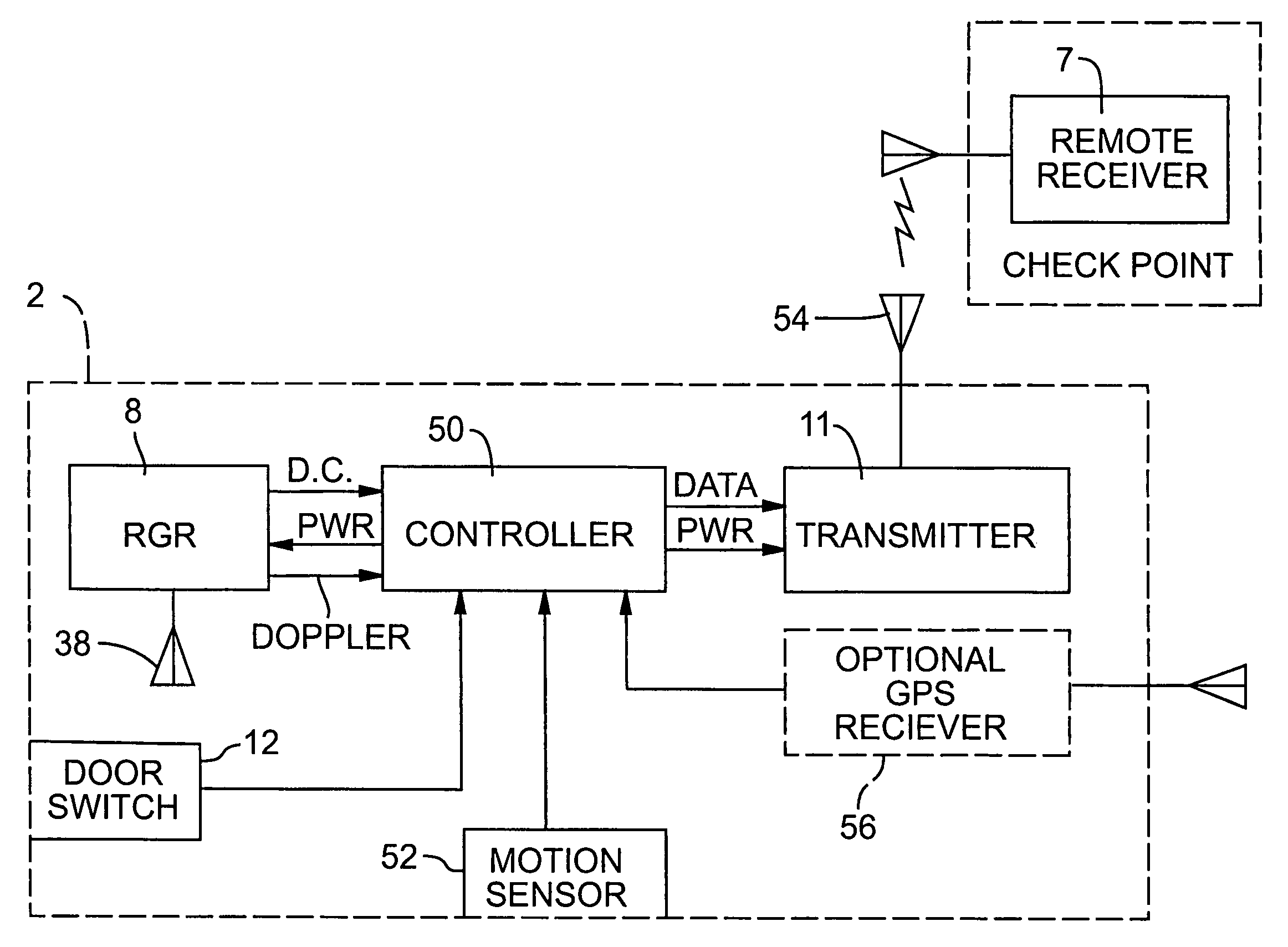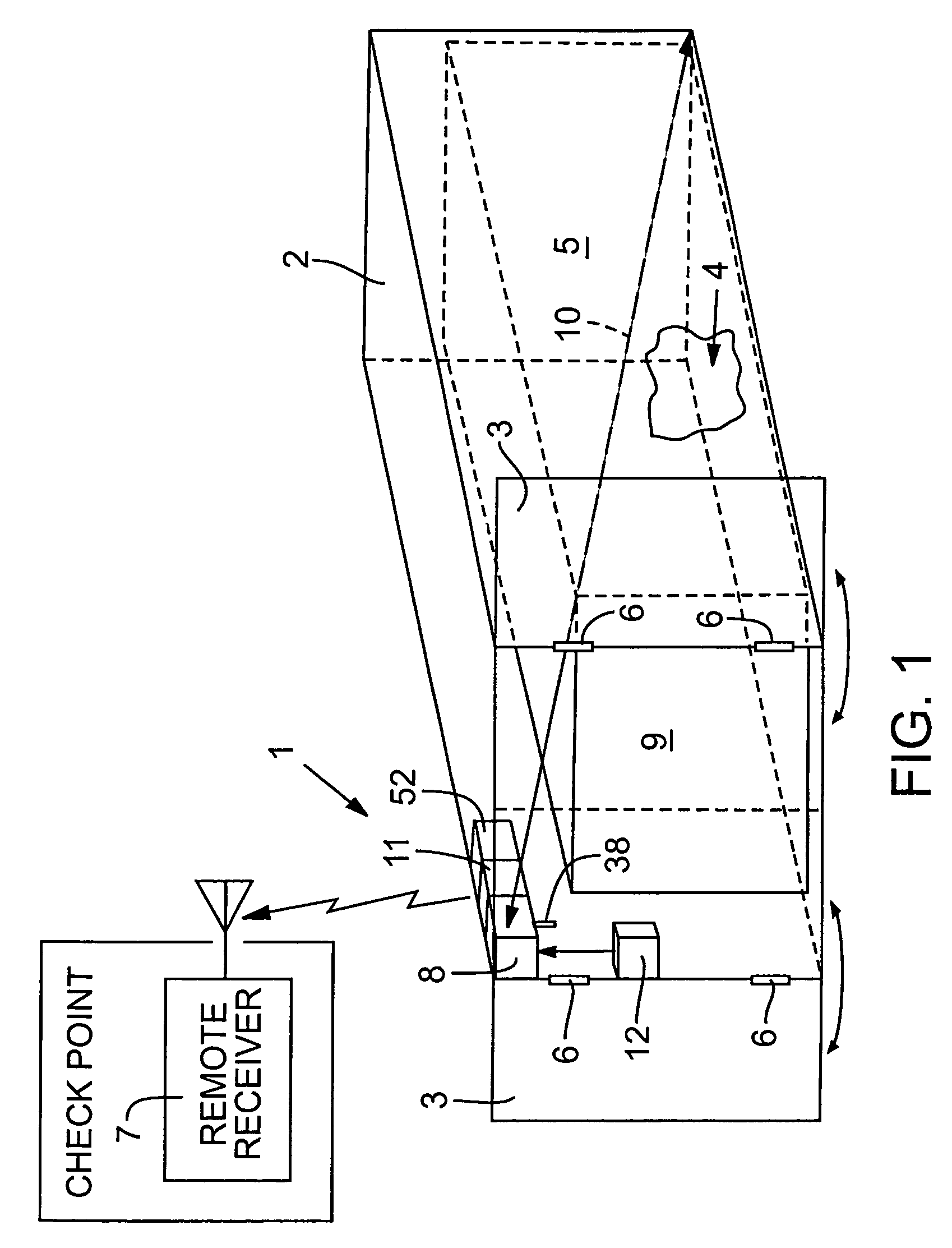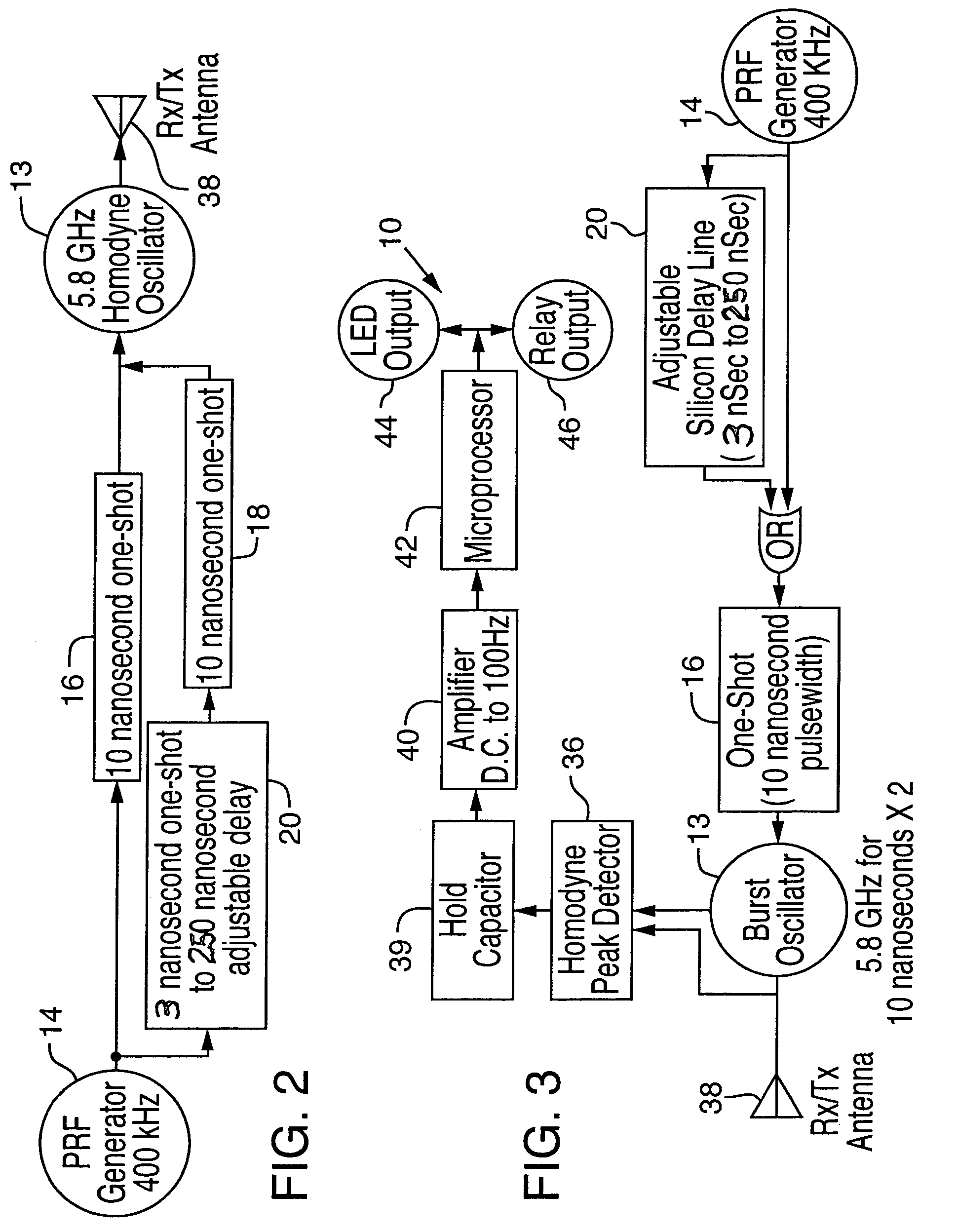Shipping container security system
a security system and shipping container technology, applied in the field of intrusion monitoring security systems, can solve the problems of high current consumption two-way communication, low security, and low security of sealing systems, so as to reduce current consumption, reduce current consumption, and reduce current consumption
- Summary
- Abstract
- Description
- Claims
- Application Information
AI Technical Summary
Benefits of technology
Problems solved by technology
Method used
Image
Examples
Embodiment Construction
[0028]FIG. 1 shows a security system 1 of this invention that senses intrusions into a shipping container 2 through more than just the opening of doors 3 (shown open in solid lines, and shut in dashed lines). Security system 1 can also determine whether shipping container 2 has been breached by cutting an opening 4 in a surface (including any of ends, walls, top, bottom, and doors), such as one of sides 5 of container 2, or if one of doors 3 have been removed from hinges 6. Security system 1 preferably communicates this intrusion information to a remote receiver 7 without interrogation, thereby reducing power consumption within security system 1. Any breach sufficiently large to allow access to shipping container 2 can be sensed by security system 1 and reported to receiver 7. The sensing is accomplished by employing at least a range-gated micro-impulse radar (“RGR”) 8, which is described with reference to FIGS. 2, 3, and 4.
[0029]RGR 8 produces very low power, wide-band, short durat...
PUM
 Login to View More
Login to View More Abstract
Description
Claims
Application Information
 Login to View More
Login to View More - R&D
- Intellectual Property
- Life Sciences
- Materials
- Tech Scout
- Unparalleled Data Quality
- Higher Quality Content
- 60% Fewer Hallucinations
Browse by: Latest US Patents, China's latest patents, Technical Efficacy Thesaurus, Application Domain, Technology Topic, Popular Technical Reports.
© 2025 PatSnap. All rights reserved.Legal|Privacy policy|Modern Slavery Act Transparency Statement|Sitemap|About US| Contact US: help@patsnap.com



